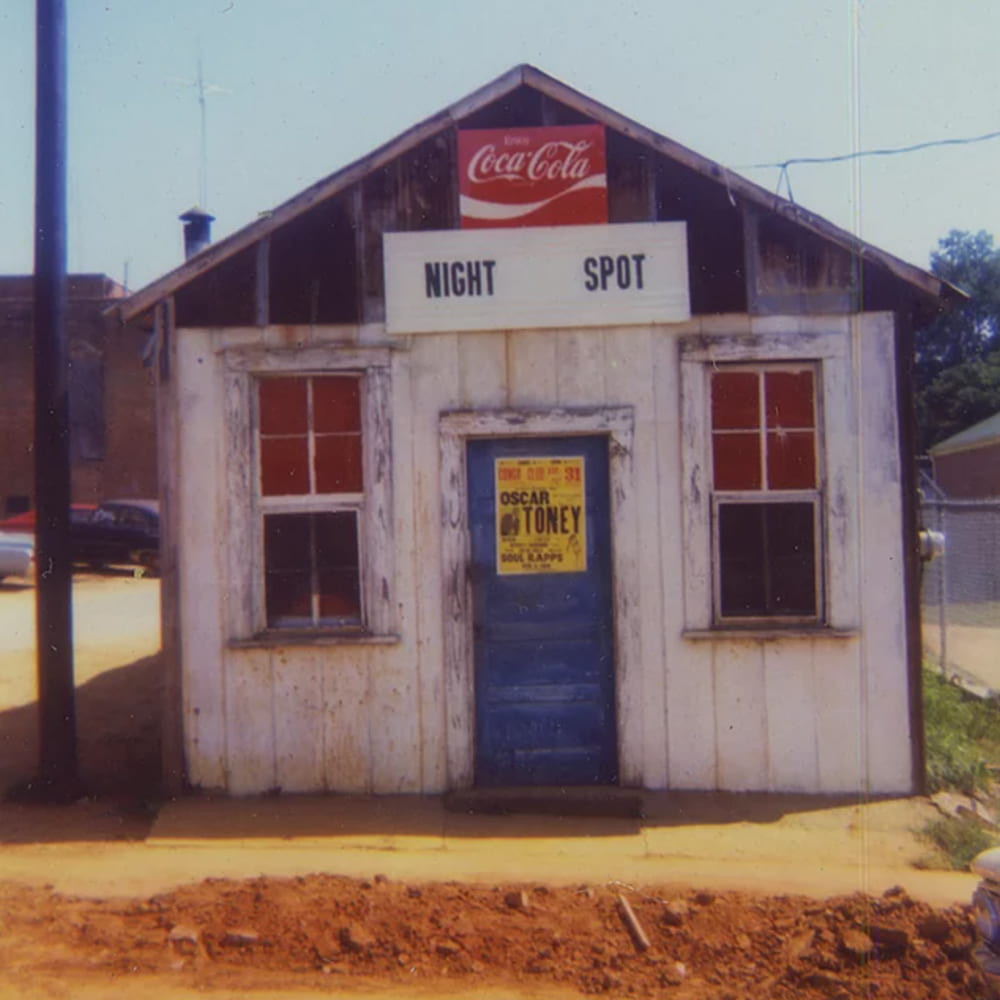Finding Home
November 19, 2019 – January 22, 2020

William Christenberry | Night Spot, Marion, Alabama, 1972
Artists: Christine Collins, Stefanie Klavens, David Hilliard, Eduardo L Rivera, William Christenberry (Collection Gallery Kayafas), Max Belcher (Collection Cheryl Hirshman)
When did “home” become embedded in human consciousness? Is our sense of home instinctive? Are we denning animals or nest builders, or are we, at root, nomadic? For much of the earliest history of our species, home may have been nothing more than a small fire and the light it cast on a few familiar faces, surrounded perhaps by the ancient city-mounds of termites. But whatever else home is—and however it entered our consciousness—it’s a way of organizing space in our minds. Home is home, and everything else is not-home. That’s the way the world is constructed.
Verlyn Klinkenborg, Smithsonian Magazine, May 2012
The notion of home is a powerful one and is imbued in the work of the artists participating in the exhibit Finding Home. Their works evoke questions that all of us carry. As an echo to the quote by Verlyn Klinkenborg, additional questions assert themselves: How do the ideas of home and its memory affect us? What are the many possible meanings of home? Often, one must leave home, in order to return, to reflect; to paraphrase novelist Thomas Wolfe – you can never really go home again. The idealized notions of home embody the ideas of safety, shelter, and family. It also evokes its fearful opposite, that of homelessness.
In her series titled Acreage, Christine Collins examines the Intimate and perhaps overlooked moments in a domestic space. The images were made at a moment of transition, when she found herself unmoored from a sense of home and a history that had previously seemed inevitable. In contrast the Oil/Cloth images are seemingly chaotic, evidence of the domestic unruly, decaying and falling apart. She says “the notion of home is mercurial and, mercifully, changes over time”. This more recent body of work, engages idealized visions of nature, the rot of domestic life, and the seduction of the artificial.
Stefanie Klavens photographs are portraits of people through the places they inhabit, home and away from home, life captured as still life. She is inspired by the seemingly banal; the mundane that hides subtle clues and hints about how we live. The everyday object possesses a talisman-like quality and forms the narrative of the human experience. The images are empty and uninhabited, yet one senses a presence just out of reach.
While David Hilliard photographs focus on the personal, the familiar and the simply ordinary, the work strikes a balance between autobiography and fiction. Within the photographs physical distance is often manipulated to represent emotional distance. He is interested in representing the spaces we inhabit, relationships we create, and the objects with which we surround ourselves. He says “I find the enduring power and the sheer ability of a photograph to express a thought, a moment, or an idea, to be the most powerful expression of myself, both as an artist, and as an individual.”
Eduardo L Rivera says that the first photographs that struck him were snapshots of his mother during the late 1960s after she and her family emigrated from Chihuahua, Mexico to Phoenix, Arizona. She sat him at the kitchen table and pulled out a shoebox containing stained Kodak prints of wondrous memories. While gazing at a portrait of herself at ten years old, her voice tightened as she recalled the pain of being separated from her homeland of Mexico for a more prosperous America. As his mother ages, the details of these family stories shift but the pictures stay the same. “Influenced by the pleasures and terrors of home life in the American Southwest and the current political discourse concerning Mexican immigrants, I make collaborative photographs with my mother that depict fragments of the quotidian to suggest a very personal relationship to the borderlands—the margins where people make their lives.”
William Christenberry 1936-2016
Although he was raised in Tuscaloosa, Christenberry spent his summers with extended family in rural Hale County. After graduating from the University of Alabama and beginning a promising, if not immediately rewarding, artistic career in New York City, he came across the 1941 book, Let Us Now Praise Famous Men, in which James Agee describes in prose, and Walker Evans in photographs, the experience of living among the dirt-poor farming families of Hale County during the Great Depression. Shortly after beginning a professorship at Corcoran College, he began making annual visits to Hale County during the summer to visit family and to explore and make photographs. Originally these all were made with a Kodak Brownie camera given to him as a child, but he later moved to a large format view camera in order to capture more detail.
In the photographs exhibited here, Max Belcher returned to the Americo-Liberian community of his youth to photograph the houses of freed slaves and free-born blacks who colonized and sometimes prospered outside the Americas, as well as the inhabitants. The homes were created from memory and imagination. Drawing from their ancestral past, borrowing from their slave-owning predecessors, the Americo-Liberians birthed a rich and profound architectural tradition.
From Introduction, House and Home: Spirit of the South, Rebecca Walker
Programming:
November 21, 6pm
Gallery talk with the Boston area artists in the exhibit
Letter To Home:
Kick-off December 3, Student Activities Period – 12:15 – 1:30pm
Pizza served
Join us and write a letter to your “home”.
The letters will be gathered in a box and shared with participants, this will remain in the gallery for the duration of the exhibit.
Ongoing in Gallery:
Reading Area and Links
Articles on “Home”: https://jewelcorgi500.wixsite.com/findinghome
Gallery Hours
Location
Suffolk University Gallery – Sawyer Building 6th Floor
8 Ashburton Place, Boston, MA 02108
Closed on university holidays & weekends
